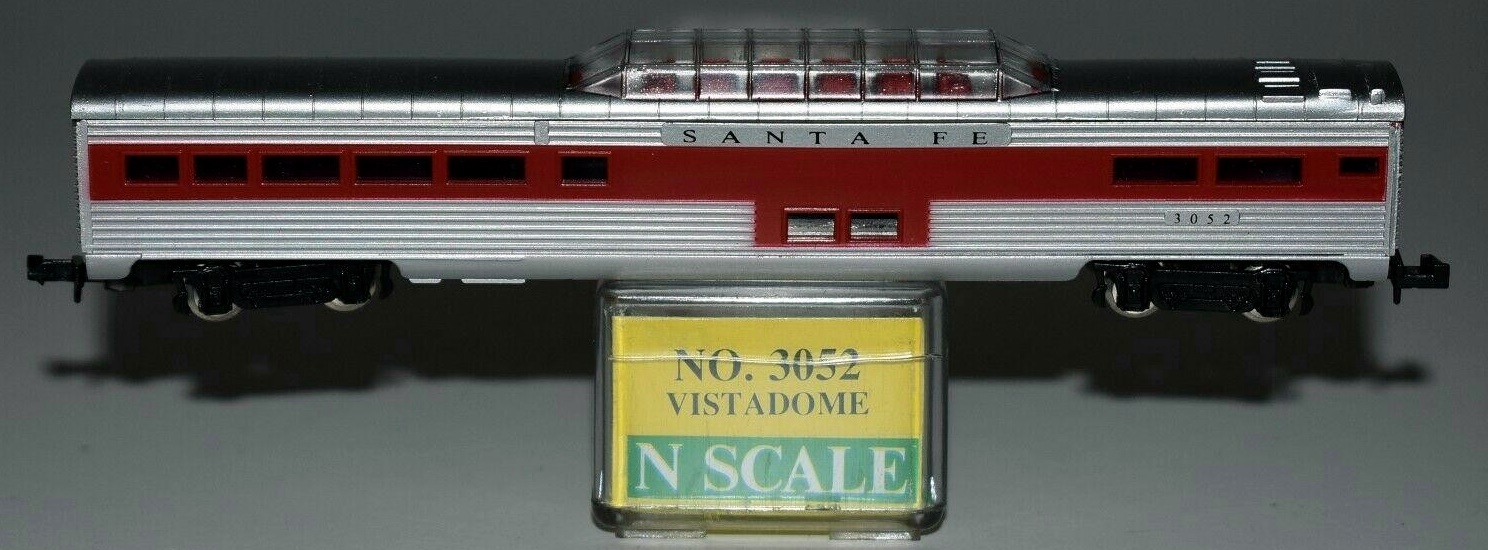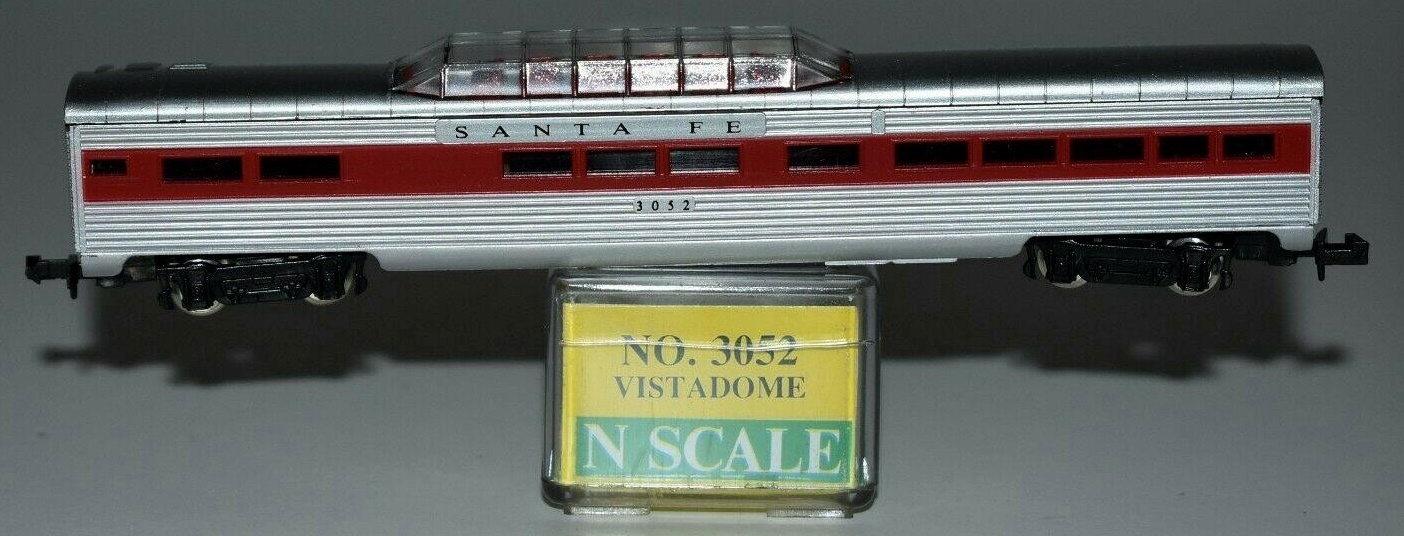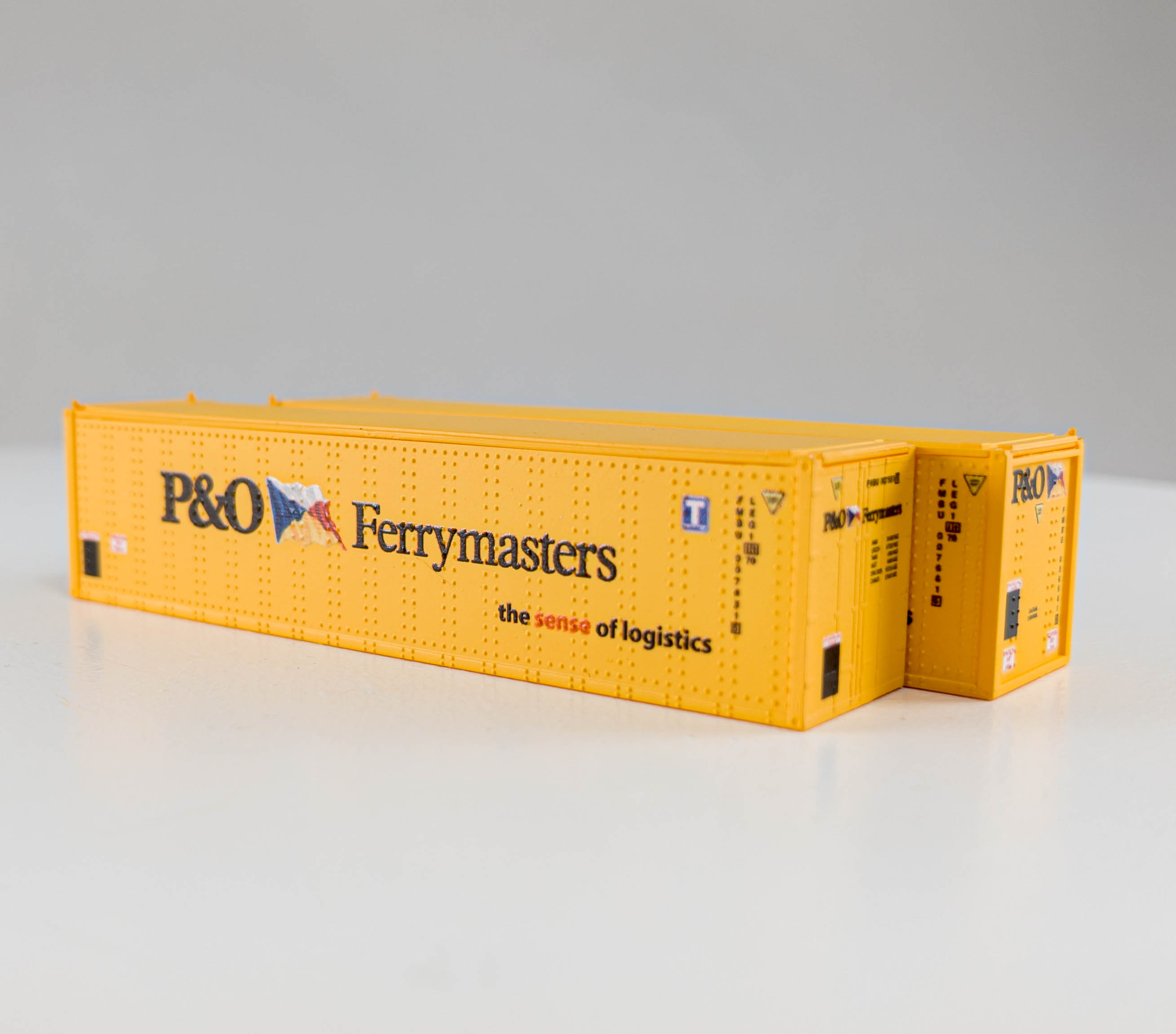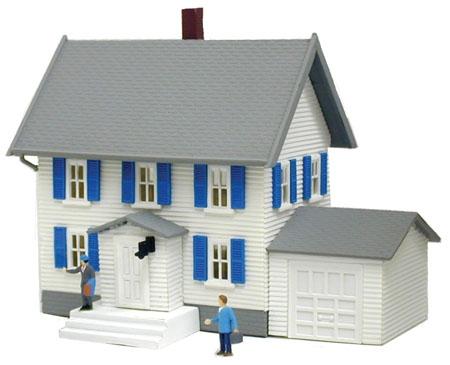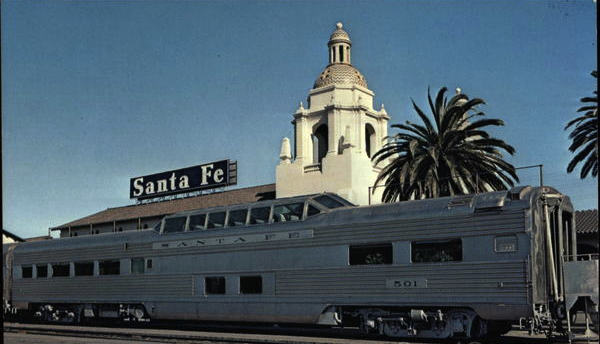Model Information: Model Power's Chinese clone of the Minitrix passenger cars. These cars measure 73 scale feet long and hence do not model any particular prototype. That being said, they *suggest* a Budd streamliner of the postwar period.
Prototype History: The Pleasure Domes are a fleet of six streamlined dome lounge cars built by Pullman-Standard for the Atchison, Topeka and Santa Fe Railway ("Santa Fe") in 1950. The cars were used exclusively on the Super Chief from their introduction in 1950 until the end of Santa Fe passenger service in 1971. Amtrak retained all six cars and continued to operate them until 1980 when they were retired. All six were preserved. The Pleasure Dome, with its famed "Turquoise Room" private dining room, contributed to the Super Chiefs reputation for elegance and luxury. The name is derived from a line in Samuel Taylor Coleridge's poem Kubla Khan.
The Pleasure Domes were lounge-dining cars, but with some unusual variations. Most dome lounges had two areas: the dome seating area above, and the lounge area below. The Pleasure Domes added a third area: a private dining room named the "Turquoise Room" which was available by reservation only and could seat 12. Newspaper reports of the 1950s noted that these cars constituted "the first private dining room on wheels." The dome seating area featured parlor car-style swivel chairs. Meals in the Turquoise Room were prepared in an adjoining dining car.
From Wikipedia
The Pleasure Domes were lounge-dining cars, but with some unusual variations. Most dome lounges had two areas: the dome seating area above, and the lounge area below. The Pleasure Domes added a third area: a private dining room named the "Turquoise Room" which was available by reservation only and could seat 12. Newspaper reports of the 1950s noted that these cars constituted "the first private dining room on wheels." The dome seating area featured parlor car-style swivel chairs. Meals in the Turquoise Room were prepared in an adjoining dining car.
From Wikipedia
Road Name History: The Atchison, Topeka and Santa Fe Railway (reporting mark ATSF), often abbreviated as Santa Fe or AT&SF, was one of the larger railroads in the United States. Chartered in February 1859, the railroad reached the Kansas-Colorado border in 1873 and Pueblo, Colorado, in 1876. To create a demand for its services, the railroad set up real estate offices and sold farm land from the land grants that it was awarded by Congress. Despite the name, its main line never served Santa Fe, New Mexico, as the terrain was too difficult; the town ultimately was reached by a branch line from Lamy.
The Santa Fe was a pioneer in intermodal freight transport, an enterprise that (at one time or another) included a tugboat fleet and an airline (the short-lived Santa Fe Skyway). Its bus line extended passenger transportation to areas not accessible by rail, and ferryboats on the San Francisco Bay allowed travelers to complete their westward journeys to the Pacific Ocean. The ATSF was the subject of a popular song, Harry Warren & Johnny Mercer's "On the Atchison, Topeka and the Santa Fe", written for the film, The Harvey Girls (1946).
The railroad officially ceased operations on December 31, 1996, when it merged with the Burlington Northern Railroad to form the Burlington Northern & Santa Fe Railway.
Read more on Wikipedia.
The Santa Fe was a pioneer in intermodal freight transport, an enterprise that (at one time or another) included a tugboat fleet and an airline (the short-lived Santa Fe Skyway). Its bus line extended passenger transportation to areas not accessible by rail, and ferryboats on the San Francisco Bay allowed travelers to complete their westward journeys to the Pacific Ocean. The ATSF was the subject of a popular song, Harry Warren & Johnny Mercer's "On the Atchison, Topeka and the Santa Fe", written for the film, The Harvey Girls (1946).
The railroad officially ceased operations on December 31, 1996, when it merged with the Burlington Northern Railroad to form the Burlington Northern & Santa Fe Railway.
Read more on Wikipedia.
Brand/Importer Information: Founded in the late 1960's by Michael Tager, the 3rd generation business specializes in quality hobby products serving the toy and hobby markets worldwide. During its 50 years of operation, Model Power has developed a full line of model railroading products, die-cast metal aircraft, and die-cast metal cars and trucks.
In early 2014, Model Power ceased its business operations. Its extensive portfolio of intellectual property and physical assets are now exclusively produced, marketed, sold, and distributed by MRC (Model Power, MetalTrain and Mantua) and by Daron (Postage Stamp Airplanes and Airliner Collection).
In early 2014, Model Power ceased its business operations. Its extensive portfolio of intellectual property and physical assets are now exclusively produced, marketed, sold, and distributed by MRC (Model Power, MetalTrain and Mantua) and by Daron (Postage Stamp Airplanes and Airliner Collection).
Item created by: Alain LM on 2020-02-01 12:07:17. Last edited by Lethe on 2020-05-07 00:00:00
If you see errors or missing data in this entry, please feel free to log in and edit it. Anyone with a Gmail account can log in instantly.
If you see errors or missing data in this entry, please feel free to log in and edit it. Anyone with a Gmail account can log in instantly.


